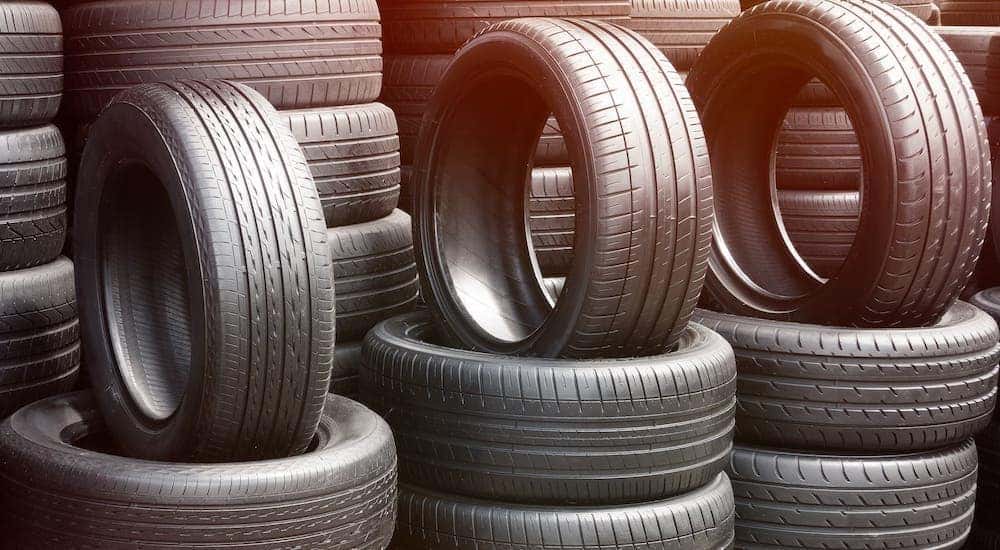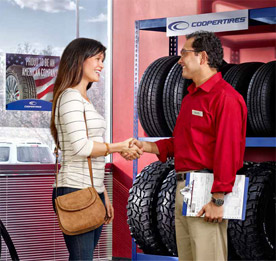Do not Lose Out on Mopar Tire Service Specials: Inexpensive Maintenance Packages
Tire Solution: The Impact of Climate Condition
When it comes to guaranteeing optimal efficiency and safety when traveling, comprehending the impact of climate condition on tire service is vital. From scorching warmth to icy roads, each weather component can significantly affect tire performance and general driving experience. By diving into the effects of varying weather on tires, chauffeurs can acquire useful understandings that may improve their automobile's efficiency and longevity. In this conversation, we will check out the intricate partnership in between climate condition and tire solution, dropping light on the value of weather-specific tire upkeep practices and considerations.
Warm and Tire Efficiency
When revealed to high temperatures, tires experience modifications in performance that can dramatically impact vehicle security and handling. The warm generated from long term driving or warm weather problems triggers the tire rubber to soften, leading to reduced tread life and boosted wear.
Moreover, high temperatures can speed up the process of tire aging, triggering the rubber to weaken a lot more quickly. To mitigate the impacts of warm on tire performance, drivers ought to regularly examine their tire pressure, rotate tires to make certain also put on, and check for any kind of indicators of damages.
Winter Effects
Cold weather conditions can have a significant effect on tire performance and security. In chilly weather condition, tires may additionally lose air pressure a lot more rapidly, which can affect taking care of and gas efficiency.
To mitigate the effects of chilly weather on tires, it is crucial to consistently inspect tire pressure and inflate them to the maker's advised levels. Utilizing winter months or all-season tires made for winter problems can also improve grip and hold on icy or snowy roadways - tires morris il. Correct tire upkeep, consisting of normal examinations for wear and damages, comes to be much more vital during cooler months to make certain ideal efficiency and safety
Rainy Issues Influence
Throughout rainy conditions, tire efficiency and safety can be substantially influenced by the wet road surfaces and minimized presence. The walk pattern of tires plays a critical duty in keeping traction on damp roadways. Tires with damaged footsteps are much more vulnerable to hydroplaning, where a layer of water constructs up in between the roadway and the tire surface, resulting in loss of grip. To combat this, chauffeurs should on a regular basis check their tires for appropriate step depth and think about buying tires especially designed for damp conditions.

Snow and Tire Safety And Security
When driving in snowy conditions, having the right tires can make a significant difference in safety and efficiency. Winter months tires are created with special rubber substances and step patterns to provide much better traction on snow and ice contrasted to all-season tires.
In addition to using winter months tires, it is vital to ensure they are effectively inflated. Winter can cause tire pressure to go down, affecting grip and handling (morris tire and alignment). Routinely checking and preserving the right tire stress is necessary for ideal efficiency in snowy conditions

Weather-Related Tire Upkeep
When confronted with numerous weather, appropriate tire maintenance comes to be a critical element of vehicle safety and efficiency. Weather-related tire maintenance encompasses a variety of techniques targeted at guaranteeing ideal tire feature and longevity in different climate scenarios. One crucial aspect of weather-related tire maintenance is tire pressure regulation. Rising and fall temperature levels can trigger tire stress to differ, impacting grip and fuel efficiency. Frequently inspecting and readjusting tire pressure according to manufacturer referrals is essential for safe driving in transforming climate condition. In addition, tire walk depth plays a considerable function in handling various climate aspects. Tires with sufficient walk depth offer far better hold on damp or icy roadways, minimizing the risk of skidding or hydroplaning. Evaluating tire step on a regular basis and changing tires when step wear reaches a specific depth is crucial for preserving grip and stability in damaging weather. By focusing on weather-related tire maintenance, vehicle drivers can improve safety, enhance vehicle performance, and extend the life-span of their tires.
Conclusion
In verdict, climate conditions have a significant influence on tire performance and security (mopar tire service specials). From warm click to find out more influencing tire stress and wear to chilly weather condition minimizing traction, it is vital to think about the weather when maintaining and using this article tires.
In this conversation, we will explore the intricate relationship in between weather condition conditions and tire service, shedding light on the importance of weather-specific tire maintenance methods and factors to consider.
